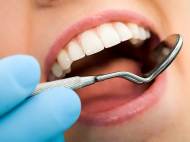A peptide-based fluid used for a non-invasive way to fight tooth decay
 Researchers from the University of Leeds have discovered a new way to treat the first signs of tooth decay. They developed a peptide-based fluid that is literally painted onto the tooth’s surface in order to reverse the damage of acid attack and re-builds teeth as new. The peptide technology is based on knowledge of how the tooth forms in the first place and stimulates regeneration of the tooth defect.
Researchers from the University of Leeds have discovered a new way to treat the first signs of tooth decay. They developed a peptide-based fluid that is literally painted onto the tooth’s surface in order to reverse the damage of acid attack and re-builds teeth as new. The peptide technology is based on knowledge of how the tooth forms in the first place and stimulates regeneration of the tooth defect.
Tooth decay begins when acid produced by bacteria in plaque dissolves the mineral in the teeth and forms microscopic holes. As the decay process progresses these micro-pores increase in size and number. In order to prevent the need for drilling or tooth removal, the researchers used a peptide known as P 11-4 which is capable to assemble together into fibers when certain conditions are achieved.
“This may sound too good to be true, but we are essentially helping acid-damaged teeth to regenerate themselves. It is a totally natural non-surgical repair process and is entirely pain-free too”, said lead researcher Professor Jennifer Kirkham, from the University of Leeds Dental Institute.
When applied to the tooth, the fluid soaks into the micro-pores caused by acid attack and then spontaneously forms a gel when it comes to contact with saliva. This gel then provides a framework that attracts calcium and regenerates the tooth’s mineral from within, providing a natural and pain-free repair.
The technique was recently taken out of the laboratory and tested on a small group of adults whose dentist had spotted the initial signs of tooth decay. The results from this small trial have shown that P 11-4 can indeed reverse the damage and regenerate the tooth tissue.
“The results of our tests so far are extremely promising”, said Professor Paul Brunton, who is overseeing the patient testing at the University of Leeds Dental Institute. “If these results can be repeated on a larger patient group, then I have no doubt whatsoever that in two to three years time this technique will be available for dentists to use in their daily practice.”
Unlike traditional fillings, this treatment allows the patients to keep their natural teeth. Since it doesn’t involve a mechanical drill, it is also completely non-invasive. The study is being funded by credentis AG who have licensed the technology and are preparing to introduce P11-4 to dentists worldwide.









This find is very interesting and I bet that dentists will find a way to make us pay this treatment for much more than we actually should.
Very good innovation in Dental care.
Dr.A.jagadeesh Nellore(AP),India
E-mail: anumakonda.jagadeesh@gmail.com
What happens if it is applied in a wrong way and it ends inside the mouth or on its way to stomach? Also, how safe is its use in long term?
Is there anyone doing this procedure in the state of Arizona? I have a daughter that is an ideal candidate for this and is in desperate need for dental work to be done. She does not have dental insurance and has exhausted every avenue of finding help with her circumstances and dilema…
If there is any type of experimental procedures being done,and a need for willing participants to
have them performed on, please let us know.
And if there are dentists in our area that are doing this type of work, would you please direct us to them.
Thank you,
Danielle Reeves
kdencore1@gmail.com